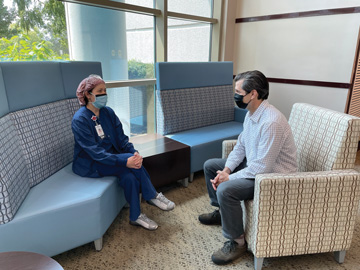The opportunity to start a surgical facility from scratch is a rare one for any healthcare provider, so when Brandy Ginzinger, RN, was named director of surgical services at UCF Lake Nona Medical Center in Orlando, Fla., she seized the day — and employee safety motivated many of her decisions. Her efforts during the facility’s design phase earned her and the center the OR Excellence Award in Employee Safety.
Hired in April 2020 in anticipation of the facility’s eventual opening a year later, Ms. Ginzinger decided to create a surgical environment that nipped as many outdated, unsafe practices and habits in the bud as possible. The safety and well-being of the department’s employees were top-of-mind during that process. “As soon as we started looking over the supply inventory and equipment list that was being created for the new facility, immediate staff safety measures were being designed,” she says.
Regular cautery pencils were on the list, but Ms. Ginzinger wanted all of the new ORs to be surgical smoke-free from the get-go. “It was definitely a conscious effort,” she says. “We made sure that we opened on day one with only smoke evacuation pencils, so there was no temptation to use the regular ones. It makes it a whole lot harder for surgeons to say, ‘Well, we had them at some point.’”
Instead, surgeons were provided the chance before the facility opened to sample the smoke evacuation cautery pencils, helping them become comfortable with the product before they used it for the first time in a live surgery. “I thought there was going to be pushback, but I think it’s all in how you approach surgeons,” says Ms. Ginzinger. “We said, ‘This is going to be the cautery device that we’ll use because we’re opening completely smoke-free. Go ahead, touch it, feel it, make sure it meets your needs.’”
The trialing even allowed Ms. Ginzinger to get a consensus on which activation mechanism surgeons preferred on the smoke evacuation pencils. The surgeons opted for push-button over rocker switch, so the facility only needed to invest in one type. Meanwhile, suction irrigators that included a smoke evacuation component were also placed on the supply list and stocked in the ORs.
The employee safety effort for the new facility didn’t stop at smoke evacuation. For example, all sharps throughout the entire facility are safety-retracted models — a similar “all or nothing, this is it” proposal to the smoke evacuation pencils.
.svg?sfvrsn=be606e78_3)


.svg?sfvrsn=56b2f850_5)